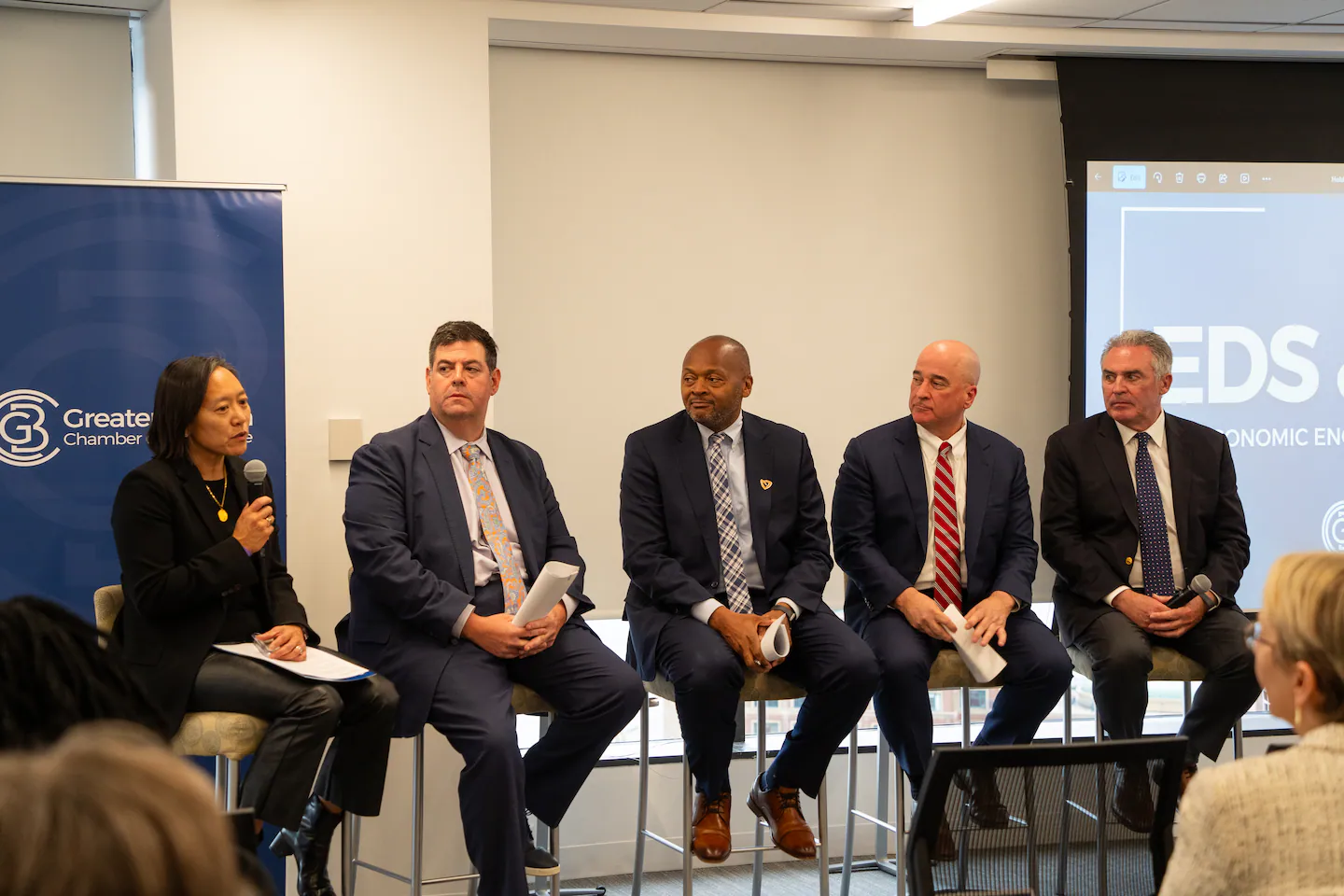Copyright The Boston Globe

With federal cutbacks looming, it could be a gloomy holiday season for leaders of the region’s universities and hospitals. So what could Santa leave in their stockings to cheer them up? That’s essentially what Flagship Pioneering executive, and former state economic development secretary, Yvonne Hao asked the leaders of the industries’ top trade groups on Tuesday during a panel discussion/gripe session on the future of the region’s vaunted eds-and-meds sector at the Greater Boston Chamber of Commerce. Hao asked the panelists about their wish lists: how they thought state government could help, and how the business community could pitch in. The event dovetailed with a new report issued by the Chamber that takes a closer look at the tens of billions of dollars that hospitals and universities pump into the region’s economy — underscoring what’s at stake now that federal policy changes have put those institutions at risk. (The report, by Econsult Solutions Inc., showed that “eds and meds” in Massachusetts collectively produce $156 billion in economic output each year, support more than 800,000 jobs, and contribute nearly $4 billion in tax revenue.) Advertisement Michael Curry, head of the Mass. League of Community Health Centers, wants government leaders to focus more on primary care, and for business leaders to step up their investments of time and money in the state’s health centers. For Steve Walsh of the Mass. Health & Hospital Association, he wants the business community to be aware of the broader impacts to local employers if workers need to leave the country or patients lose federal insurance subsidies. Walsh also mentioned an “early gift” from the state Legislature last month in the form of funding relief for “safety net” hospitals. Rob McCarron, president of the Association of Independent Colleges and Universities in Massachusetts, rattled off all the “attacks directed at higher ed” from Washington since January: threats to international students, cuts to financial aid, taxing endowments, to name a few. Universities can’t fend everything off on their own, and needs the broader business community as an ally to “push back on some really problematic ideas.” Advertisement “Having someone other than us to say ‘please don’t do that’ would really be helpful,” McCarron said. Chamber chief executive Jim Rooney suggested government officials don’t always appreciate how important eds-and-meds institutions are to the local economy: Maybe simply streamlining state and local bureaucracy could help. “If you walked into any city in the country, the world, and said, ‘I want to put a Dana Farber Cancer Institute in your community,’ they would say, ‘Can you start on Monday?’” Rooney said. “We say, ‘I’ve got five years of public process to put you through.’” Hao tried to cheer up the panel, saying: “These are not good times. Let’s be honest. However, I’m fundamentally optimistic. I’m confident that coming out of this, we’re going to be that much further ahead.” It seemed to take an unexpected acapella moment to cheer everyone up. Responding to an audience question about what the hospital industry is doing to address its workforce issues and other woes, Walsh said hospital leaders are trying to come up with creative ideas to fill thousands of open positions, including the possibility of “healthcare high schools” similar to the model used by the Commonwealth Virtual Schools system. Walsh then mentioned how he watched the TV show “Fame” growing up, about a performing arts high school, and launched into the refrain of the show’s theme song. The musical levity lightened the mood, for a moment, and prompted Hao to say: “I did not expect that to come up on this panel.” Jon Chesto can be reached at jon.chesto@globe.com. Follow him @jonchesto.



